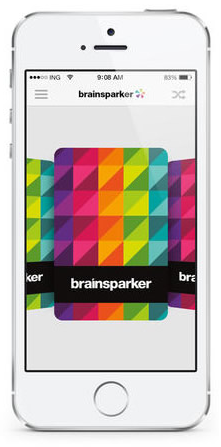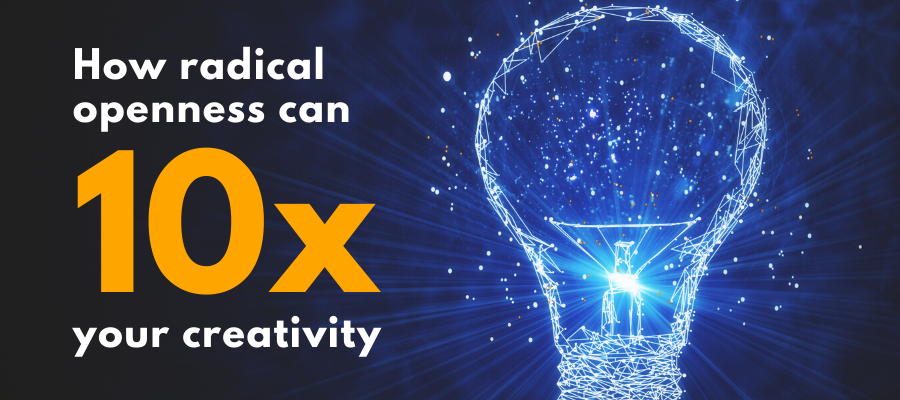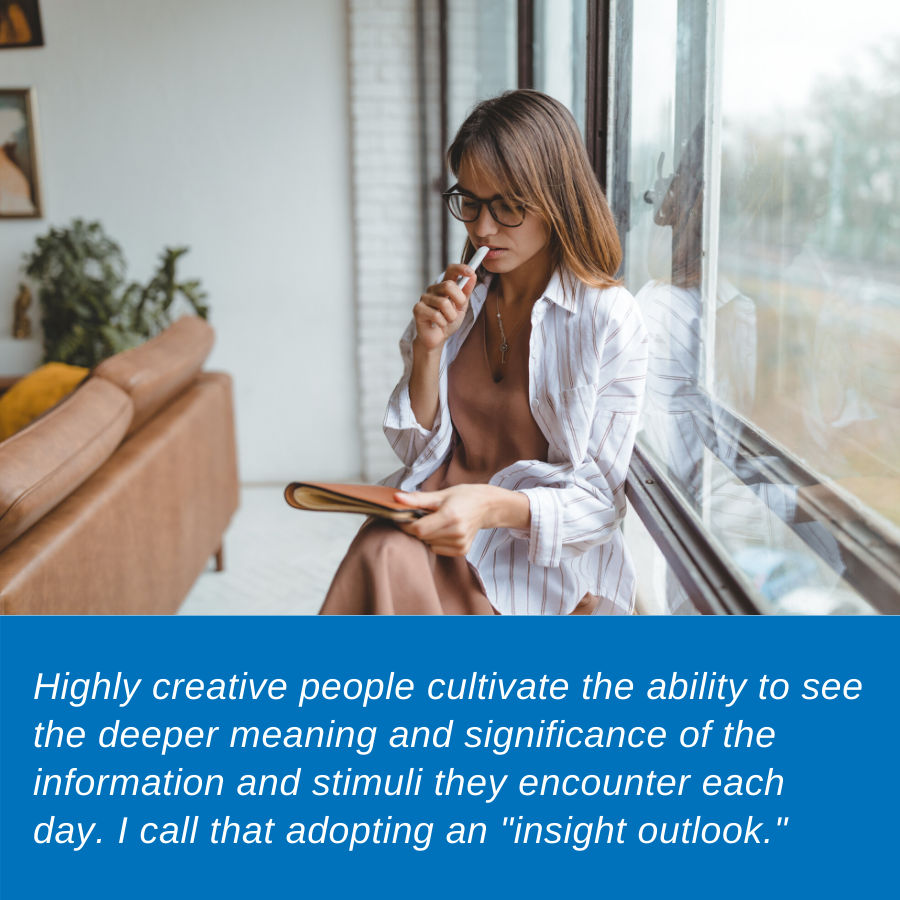What is the master key to unlocking 10x creativity? A radical level of mental openness that changes how your brain is wired and supercharges the quality of your creative output.
Radical openness manifests itself in a number of profound ways that go well beyond what the average person thinks of as “creativity.” They can be divided into two “hemispheres” – internal openness, which encompasses the mysterious realm of the mind, and external openness, which focuses on stimuli in our outside environment that can serve as creative catalysts. Let’s take a closer look.
Internal openness
Openness to investing time in problem definition. Most people jump to the fun part of the creative process – brainstorming. But that’s usually counterproductive because it causes you to pick at symptoms or generate solutions for the wrong problem. A more effective approach is to first clearly define the problem. Often, this involves deconstructing it into its elements. In the process, a solution may suggest itself.
Openness to persistence. Many people stop brainstorming when they uncover the first “right” answer – an idea that appears to solve the problem. They check the box. Done. But often, the initial ideas your brain produces are of relatively low value. To uncover the truly valuable ideas that lie at the periphery of your thinking, you need to keep going. Capture as many ideas as you can for at least 30 minutes. Write them all down, no matter how crazy they may sound. A crazy idea may actually be a stepping stone to a practical, elegant solution.
Openness to adopting an “insight outlook.” Highly creative people cultivate the ability to see the deeper meaning and significance of the information and stimuli they encounter each day. With a bit of practice, you can become much more mindful and attuned to it. One way to do this is to ask yourself questions like these:
- “What does this mean to me?” and
- “How can I adapt this to my needs?”
You see, creativity is largely about making connections between seemingly unrelated things. Truly new-to-the-world ideas are exceedingly rare. Instead, most are creative adaptations of what has worked in another market, industry or field of study.
 Openness to lateral thinking. Lateral thinking is literally “sideways” thinking. The whole ideas is to jump out of your mental comfort zone and explore new pathways of thinking, perspectives and possibilities. As human beings, we tend to be habitual thinkers. Inertia takes over. We stop with the first right answer. We don’t explore outside of our comfort zones. Left to our own devices, we’re not very good at lateral thinking.
Openness to lateral thinking. Lateral thinking is literally “sideways” thinking. The whole ideas is to jump out of your mental comfort zone and explore new pathways of thinking, perspectives and possibilities. As human beings, we tend to be habitual thinkers. Inertia takes over. We stop with the first right answer. We don’t explore outside of our comfort zones. Left to our own devices, we’re not very good at lateral thinking.
Fortunately. there are many types of tools and techniques you can use to help you think in divergent ways. From brainstorming card decks and ideation apps to mind mapping software, digital idea capture tools and creative problem solving books that will “whack” your thinking upside the head, you have many options to jump-start your creative muse. Tools like these will help you excel at non-linear thinking.
Openness to the unseen powers of the subconscious mind. Creative people know that the subconscious mind is one of their biggest allies. It takes in everything you read, hear, see and experience and stores it. Then, it relentlessly smashes together different ideas and concepts. It serves up those that are most intriguing as hunches or flashes of insight. Most people ignore them, but the creative person values them highly.
Did you know that you can feed your subconscious mind with a problem or challenge you want to solve? Simply research everything you know about it. Review your notes just before bedtime. Then, sleep on it – literally! The next morning, be prepared to capture the ideas that bubble up into your conscious mind.
External openness
Openness to capturing your ideas. Prolific creators have a system to capture ideas and review them on a regular basis. Ideas tend to be fleeting creatures, bubbling up from the deep recesses of the mind without warning, then disappearing just as quickly. Fortunately, there are many types of tools you can use to lasso your insights, hunches and ideas. These include index cards, notebooks, flip charts, whiteboards, digital audio recorders and mobile devices.
Openness to adapt other people’s ideas. Be on the lookout for ideas and solutions that you can adapt from other industries our professions to your own. Often, winning ideas are not totally new to the world, but are an adaptation of a solution from a totally unrelated field or a combination of several existing ideas.
Highly creative people maintain “swipe files” of interesting ideas that may come in useful for a future creative project. In addition, they know that creative questions are also valuable because they are excellent stimuli for creative problem-solving. In short, exceptionally creative people are relentless collectors of creative stimuli.
Openness to feeding your brain with a diverse set of inputs. To generate divergent ideas, you need to broaden your information diet. Diversify the raw materials that you are feeding to your subconscious mind. More variety of input results in a greater range of creative output.
Openness to utilizing creative problem-solving tools and techniques to amplify your creativity. For some reason, many people believe they must “brutethink” their way to creative solutions, on their own. Actually, you can generate more valuable ideas with a bit of outside help. Brainstorming tools leverage your brain’s powerful associative capabilities. They serve up random stimuli that get your brain moving in new directions – and kick-start it out of the well-worn, rutted paths it usually takes.
Openness to visual thinking tools and techniques. Often, visualizing a complex challenge gives you a whole new perspective on it. Mind mapping, diagramming and sketching are three techniques you can use to gain new insights and ideas – ideas that you can’t find in a linear Word document or a slide deck
Openness to having your ideas rejected by your coworker or boss. This is a tough one for many people. They hold onto their ideas, out of fear that they will be rejected. This is a self-defeating mindset. Remember, if you’re committed to exercising your creative mind on a regular basis, the number of ideas you can generate is unlimited. There’s much more where that came from.
Don’t take the rejection personally.
Keep creating! Your creative focus and mindset of abundance will set you apart as someone who cares enough about the business to contribute ideas to improve it.



